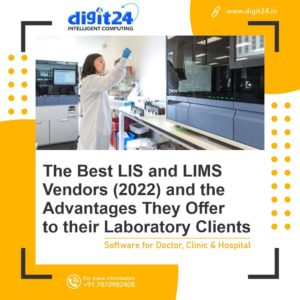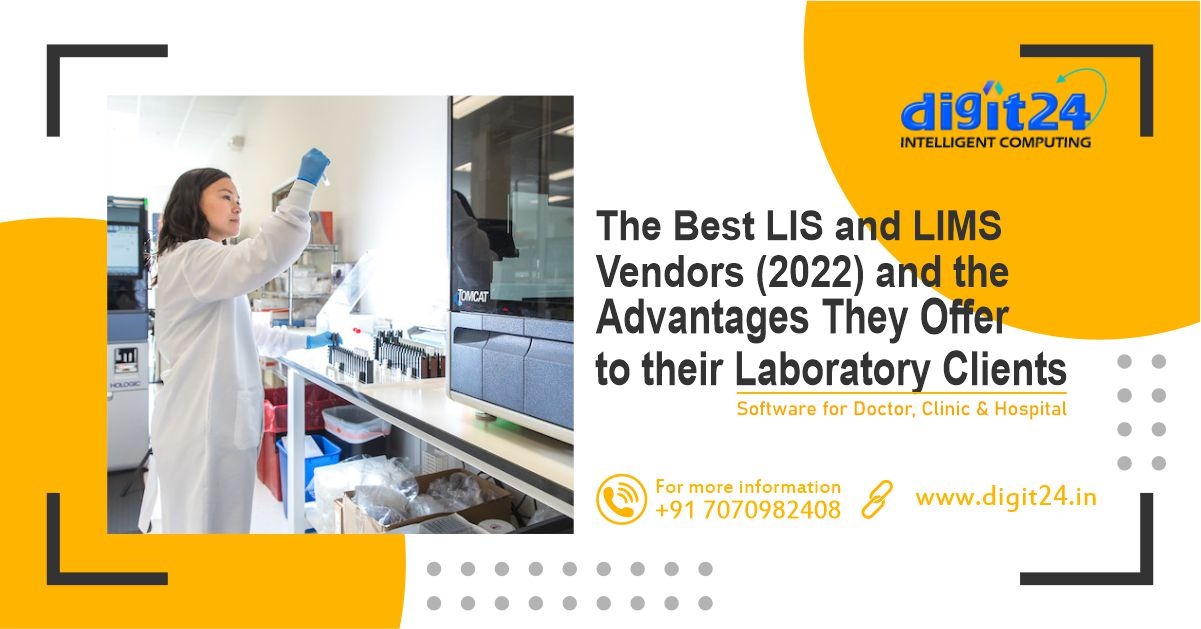As we enter the second quarter of 2021, pathology groups and clinical laboratories across the country continue to seek laboratory information systems (LIS) and laboratory information management systems (LIMS) that will enable them to navigate within an industry. which is in constant flux so that they can become more profitable. Apart from a worldwide pandemic that is now entering its second year, laboratories will also have to deal with fee cuts, unique payer requirements, increased regulations, claim denial, shortage of skilled technicians and consolidation.
To be successful while addressing these challenges, laboratory operators must align their businesses with LIS vendors and LIMS vendors who understand the barriers they face and prepare them for future success while addressing today’s challenges. can help you cope.

To Get Best Pathology Lab Management Software : CLICK HERE
LIS vs. LIMS – What’s the Difference?
Laboratory Information Systems (LIS) and Laboratory Information Management Systems (LIMS) are related and the terms are often used interchangeably. Both are important tools that laboratories use to manage informatics.
LIS systems are designed to prevent medical errors and manage clinical diagnostic testing in a healthcare environment. These systems track, store and manage clinical trials involving patient demographics and each patient sample on an individual basis. They also prepare and send reports with test results to physicians for patient care.
LIMS systems are designed for use in other analytical test environments and are often associated with research laboratories and the pharmaceutical and manufacturing industries. These systems often focus on the sample rather than the patient. That said, modern LIMS are now being built with many components that can further blur the distinction between the two systems.
Like LIS, modern LIMS systems now include regular computerized provider order entry, sample barcoding, sample tracking, automation and rule engines, customizable reporting, interfaces with laboratory equipment and electronic health records, and patient and provider portals, And they can be either server-based or Software as a Service (SaaS) based.
Basic Parts of LIS and LIMS Systems
Lab operators, driven by a desire to differentiate themselves in the market, grow their operations and become more profitable, are turning to laboratory information systems vendors who provide comprehensive and flexible software solutions that address common LIS and LIMS system problems. Addresses that inhibit growth.
Issues with reliability and performance
Inadequate functionality (lack of modules and features)
Lack of scalability (existing systems may not keep up with demand)
Difficult to configure (requires external vendor support)
Legacy report formats and delivery options that do not meet customer needs
Inefficient workflow and manual processes
Sample handling and tracking workflow that lacks a robust chain of custody, uniquely barcoded samples and verification and sample security check-points
Difficult to access information on procedures, constraints and compliance
Interdepartmental and external (EMR/EHR, API, equipment, state registries, billing services) need for interoperability
Trends in Medical Lab Information System Management
Modern lab operators looking for only sample management software are looking for a future-ready and scalable platform that is essential to fully support technical operations, improve patient outcomes, expand services, and increase collections. Provide flexibility, automation and interoperability.
The best LIS vendors and LIMS vendors are those who can offer infinitely configurable software solutions to meet each customer’s specific needs, no matter the size of the laboratory or clinical discipline.
When purchasing a LIMS or LIS system, one should consider how it adapts to more users, interfaces and increased services as laboratory operations expand. Additionally, the best laboratory information software systems benefit users with better operational workflows, lower labor costs, and increased profits.
Manage all departments and operations on one platform without data silos
Automating complex processes and reducing manual touchpoints
Maximizing Interoperability and Efficiency
Market differentiation to expand services and acquire new business
Maximizing Interoperability and Efficiency
Fully customizable report generation
Eliminating human errors and lost samples
Fully customizable report generation
Providing multiple options for report delivery
Monitoring quality control to quickly identify, troubleshoot and resolve problems
Improve turnaround time
Get easily accessible business analytics (dashboards, statistics, dynamic reports) from every department in real-time
Taking the best trends in medical laboratory information systems management even further when best systems are combined with a robust Revenue Cycle Management (RCM) system that provides end-to-end support for all laboratory activities including billing and finance, laboratories provides solutions. Get a huge benefit that comes with starting the billing cycle at the beginning of the order instead of finalizing the case. Add further front-end billing support such as verification, eligibility, and scrubbing components, and labs can reduce claims denial and compliance risk, as well as clean claim submissions and vastly increase revenue.
The Advantages and Disadvantages of LIMS Systems and LIS Systems
So what are the pitfalls, or what to be wary of, when lab operators are looking for new LIMS or LIS alternatives for their respective labs?
Frequently asked questions include.
To change the configuration, is external development required, or can the changes be made by laboratory personnel?
Can the system be configured to meet the immediate needs of the lab and is it scalable?
After implementation, will the lab be charged for vendor support requests?
How often is the LIS/LIMS system updated?
How are laboratory personnel supported and trained during implementation?
The best LIS vendors and LIMS vendors take full responsibility for all customer information systems needs by connecting and integrating each department and laboratory process and removing information silos. They also provide infinitely configurable software systems that are ever-evolving and feature-rich, and then take it a step further by empowering lab users to make changes to the system and without the need for outside help. Additionally, they also provide their clients with deep expertise and best practices within the laboratory domain, training during and beyond implementation, and responsive 24/7 customer service and support.
In short, when purchasing a LIMS or LIS system, lab operators should not settle for a rigid and boxed software solution. Instead, they should look for a strategic partner who will assist, tailor and mentor the lab team when help is needed, as well as provide an innovative and adaptable platform that will grow and grow as the business grows. could.

